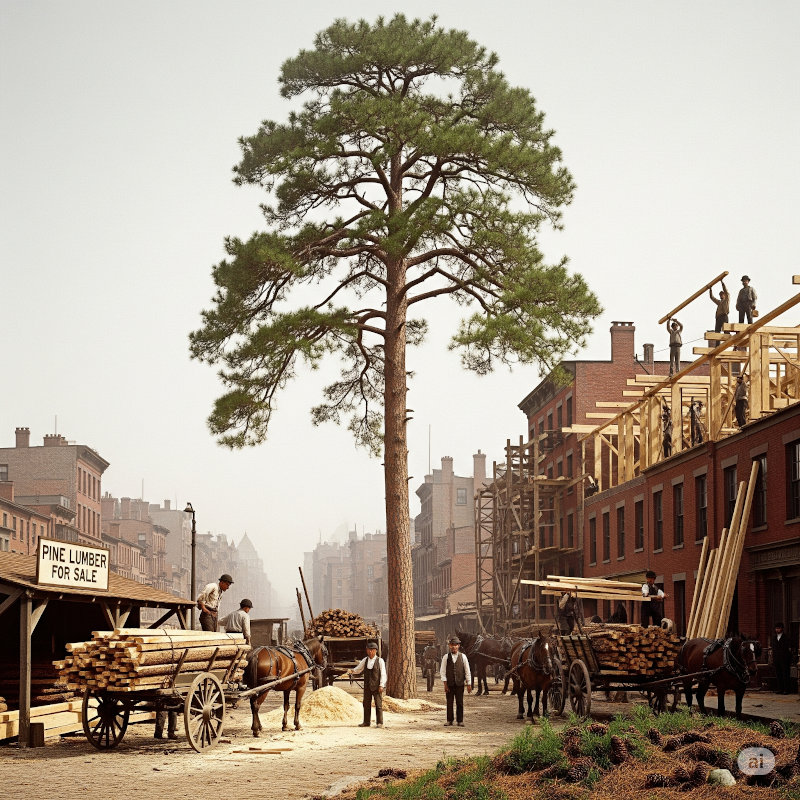White Pine in Late-19th-Century New York (1870–1900): Ecology, Markets, and Building Uses

Scope: How white pine shaped settlement-era building, markets, and craft in New York State before chainsaws.
I. Overview & Range
By the late nineteenth century, New York’s most accessible old-growth white pine had already been heavily logged in lowlands and along rivers, yet significant second-growth and some mature tracts remained in the central and northern counties. Pine’s low density, straight grain, and large diameters made it the premier softwood for framing, wide boards, and finish carpentry throughout the period.
II. Wood Properties (Builder’s View)
- Lightweight, strong enough for framing, and easy on hand tools.
- Stable and straight-grained; planes, nails, and glues well.
- Large clear boards possible from old trees; excellent for doors, sash, casing, and paneling.
III. Markets & Availability (1870–1900)
- Framing lumber: Balloon/platform frames favored pine where available; spruce and hemlock substituted when pine was scarce.
- Millwork & Interior: Doors, window sash, baseboard, crown, and built-ins commonly in pine due to workability.
- Boards & Sheathing: Wide boards (flooring, paneling, sheathing) remained a hallmark where mature logs persisted.
- Transport: Rail and river systems moved pine statewide; proximity to mills still governed local retail supply.
IV. Harvest & Milling Pre-Chainsaw
- Felled with axe and two-man crosscut; wedges directed fall.
- Skidded by horses/oxen on winter roads; rafted or hauled to steam/water mills.
- Circular saws dominated; band saws grew in the 1880s–90s, improving yield from big logs.
V. Typical Applications Matrix
| Use | Why Pine? | Notes |
|---|---|---|
| Studs, joists, rafters | Light, workable | Spruce/hemlock alternates north of Mohawk |
| Sheathing & subfloors | Wide, easy to nail | Economical near mills |
| Interior trim, doors, sash | Planes cleanly, takes paint | Clear grades prized |
| Clapboards & siding | Holds paint, mills well | Durability improved with paint |
VI. Age & Growth Character
Merchantable white pine in this era ranged from 80–150+ years in second-growth stands to 200–300 years in remaining old growth. Slow-grown timber produced tighter rings and particularly stable, high-quality boards—one reason period millwork endures.
VII. Conservation Context
Declining old-growth pine helped catalyze New York’s Forest Preserve (1885) and the 1894 “forever wild” protection, which limited logging on state lands and shifted supply toward private second-growth forests.
